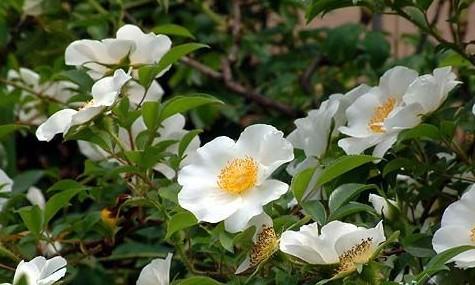Cherokee Rose (Rosa Laevigata) Profile
Written by Maggie
Dec 23 2021
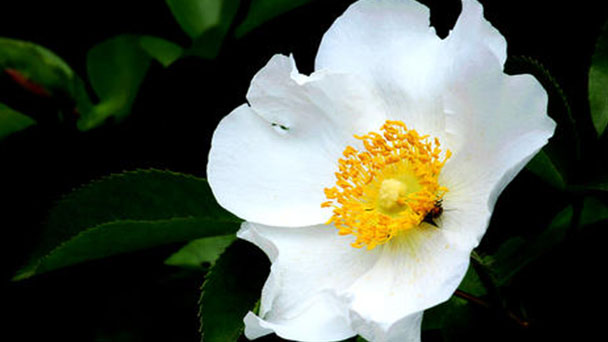
Cherokee rose (Rosa laevigata) is an evergreen climbing shrub with a height of 5m. Stems glabrous, with hooked prickles and bristles. Leaves are pinnately compound, petioles and axles prickly and hairy; Stipules are lanceolate, separated from petiole, caducous. Leaflets are leathery, usually 3, sparse 5, elliptically ovate or lanceolate ovate, 2.5 -- 7 x 1.5 -- 4.5cm, apex acute or acuminate, base suborbicular, margin serrate-toothed, glabrous, glossy. Flowers are solitary on top of lateral branches, pedicels and outer calyx tube densely spined; Cherokee rose has 5 sepals, 5 petals, White 5-9cm in diameter; Stamens are numerous, carpels numerous, stigmas clustered at receptacle opening. Fruit is obovate, 2-4cm long, purplish brown, densely spiny outside.
Cherokee Rose Picture
Cherokee Rose Info
| Botanical Name | Rosa laevigata, Rosa sinica |
| Common Names | Cherokee Rose, Cherokee Roses, Cherokee Rose Musquée, Chinese Rosehip, Fructus Rosae Laevigatae, Jin Yin Zi, Jinyingzi, Rosa Mosqueta Cherokee, Rosier des Cherokees |
| Plant Type | Perennial climbing rose shrub |
| Sun | Full sun |
| Hardiness Zones | 7-9, USDA |
| Flower color | White flowers with golden yellow stamens |
| Native Area | Asia (Central and Southern China to Taiwan, Laos and Vietnam) |
| Mature size | 20 to 60 ft. tall (wild), 6 to 15 ft. tall (pruned); 3 to 15 ft. wide |
Characteristics of Cherokee Rose
Cherokee rose is an evergreen climbing shrub, up to 5 m tall; Branchlets are stout, scattered flat curved prickles, glandular hair when young, gradually shed when old.
Leaflets of Cherokee rose are leathery, usually 3, sparse 5, with petioles 5-10 cm long; Leaves are elliptically ovate, obovate, or lanceolate ovate, 2-6 cm long, 1.2-3.5 cm wide, apex acute or obtuse, thinly caudate acuminate, margin sharply serrate, bright green above, glabrous, yellowish green below, glandular hairs along the middle rib when young, glabrous when old; Petioles and axles are prickly and glandular hairy; Stipules are free or basally connate with petiole, lanceolate, margin serrate-toothed, apex glandular, caducous.
Flowers of Cherokee rose are solitary in leaf axils, 5-7 cm in diameter; Pedicels are 1.8-2.5 cm long, occasionally 3 cm, pedicels and calyx tubes densely covered with glandular hairs, prickled as fruit grows; Sepals are ovate-lanceolate, apex leaflike, margin pinnately lobed or entire, often bristling and glandular, inwards densely pilose, slightly shorter than petals; Petals are white, broadly obovate, apex concave; Stamens are numerous; Carpels are numerous, styles free, hairy, much shorter than stamens.
Fruit of Cherokee rose is piriform, obovate, sparsely subglobose, purplish brown, outside densely bristled, pedicel ca. 3 cm long, sepals persistent.
Cherokee rose is an evergreen vine shrub, glabrous; Branchlets except hook - like prickles, densely spines. Cherokee rose has 3 leaflets, a few 5, elliptically ovate or lanceolate ovate, 2 -- 7 cm long, 1.5 -- 4.5 cm wide, margin serrate, glabrous on both sides, abaxial surface with spines along midvein; Petiole, leaf axis with small prickles or spines; Stipules are linear, separated from petiole, caducous. Flowers are solitary lateral branches apical, white, 5 -- 9 cm in diameter. Pedicles and a calyx tube are densely spiny outside. Cherokee rose fruit is subglobose or obovate, 2 -- 4 cm long, spiny, apically tipped with persistent sepals that are long and outward.
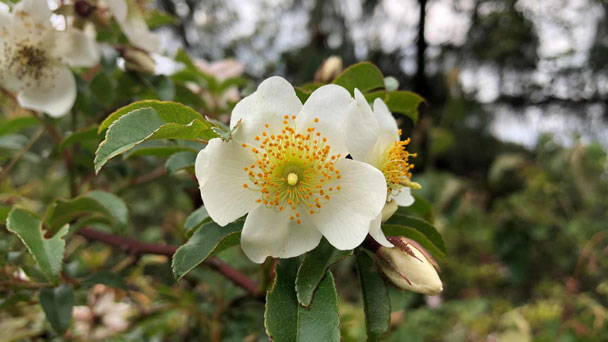
Habits of Cherokee Rose
Cherokee roses (Rosa laevigata) like warm and dry climates. Good drainage, loose, fertile sandy loam is appropriate.
Growing on wild sunny slopes; Cherokee Rose likes a warm, sunny environment. The soil requirement is not strict, but with loose and fertile, the sandy soil that contains organic matter is better. Heavy clay, saline-alkali land is not suitable for planting. Cherokee rose was born at an altitude of 100-1600m to the sun of the mountains, fields, streams in the bushes.
How to Grow and Care for Cherokee Rose
Light for Cherokee Rose
Consider planting on a south-facing, sunny, sheltered wall. While Cherokee Rose will tolerate partial shade, the Cherokee Rose vegetation thrive and withstand disorder in full sun.
Soil for Cherokee Rose
Grow in a fertile, moist however well-draining soil that is wealthy in humus. If the soil is heavy clay, it will probably do properly there too. Provide a circumneutral soil for satisfactory results.
Cherokee Rose Mulch
Spread mulch two to 4 inches deep round the plant in spring earlier than weeds come up. Put the mulch in a circle dealing with outward to the drip line (the drip line is the hints of the longest horizontal branches). Be certain to maintain the mulch two inches away from the fundamental trunk. Add greater mulch throughout the 12 months if wanted to hold the depth and shape. Mulch once more in late wintry weather to hold moisture, preserve the roots cool, reduce weeds, and inspire flowering.
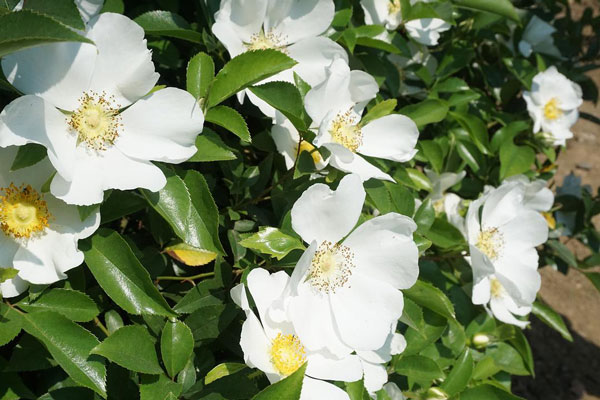
Watering Cherokee Rose
Water Cherokee Rose deeply and regularly, ideally in the mornings. In months when there is little rainfall, watering is specifically important. Leaves will flip yellow and wilt if they want extra water. Arrange a soaker hose in a circle round the plant two inches interior the ring of mulch. Turn the hose on low. Water the mulch properly with about one inch of water, which must moist the soil 12 inches deep. It can take 30 minutes to 10 hours to accomplish this deep watering, relying on the kind of soil. Wait till the water begins jogging off the edges of the mulch. At that point, flip off the hose, as the soil will now not be capable of soaking up any extra water.
Fertilizer for Cherokee Rose
Feed cherokee roses a balanced fertilizer like 10-10-10 three instances per year: in late winter; when there are symptoms of new boom in early spring; and once more after the buds have set. Likely the fertilizer will come in granules. Spread them on the ring of mulch, following the instructions on the package. Do now not drop fertilizer on the trunk. Use a backyard hose to water the fertilizer in thoroughly, till the granules dissolve.
Pruning Cherokee Rose
Prune the Cherokee Rose shrub as wished to keep the preferred height. After the vegetation are carried out blooming and the hips are dry, commence pruning. Wear leather-based gardening gloves to shield your arms from sharp thorns. Hold every department and prune it with lengthy tongs. Use pruning shears to snip the department in the different hands. Cut off the facets first to suit the trellis or fence, then trim the pinnacle horizontally.
Read More: How to Propagate Cherokee Rose
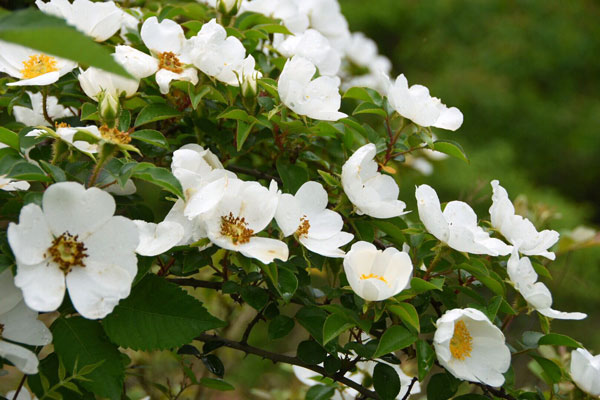
Rose is one of the most beautiful flowers in the world
Cherokee Rose Pests & Diseases
Resistant to deer, the Cherokee Rose (Rosa laevigata) is effortless to develop and cherished via butterflies and bees. It is stated that this species is hardly ever prone to insect pests and illnesses that might also extra in many instances assault different hybrid roses. Even so, preserve an eye out for pests such as aphids (especially the rose aphid), leafhoppers, glasshouse crimson spider mite, scale insects, caterpillars, massive rose sawfly, rose leaf-rolling sawfly, and leaf-cutter bees. Diseases that might also occur are rose black spot, rose rust, rose powdery mildew, rose dieback, replant disease, a canker, and honey fungus. Remove and break any diseased leaves. Plant garlic close by to guard it from such troubles and let this rambling rose thrive and prosper.
Toxicity of Cherokee Rose
According to Web MD, Cherokee Roses are medicinal. Perhaps due to their excessive quantity of nutrition C (1.5%), they can be used to deal with "ongoing cough, excessive blood pressure, swelling (inflammation) of the intestine." PickUpFlowers.com continues on, classifying the Cherokee Rose as "antibacterial, anticholesterolemic, astringent, carminative, depurative, [and] diuretic."
Around the seeds and simply under the fruit's flesh, there is a layer of hairs. If ingested, these hairs can reason infection of the mouth and digestive tract.
Cherokee Rose Varieties
Cherokee Rose hybridizes freely with different participants of the Rosa genus. Hybrid Laevigata, Shrub Rose 'Ramona' is a darkish pink/medium crimson cultivar. Rosa 'Anemone' blooms in light pink.
Cherokee Rose Distribution
Cherokee rose distributes in Central China, East China, South China, Southwest China.
Cherokee Rose Benefits
1. Influence on urinary system
Gavage of Cherokee Rose water extract (6g/kg) could reduce the frequency of urination, prolong the time between urination and increase the number of urination each time in the model of frequency of urination with high abdominal nerve preparation.
2. The effect on smooth muscle
Cherokee rose water extract can inhibit rabbit body jejunum autonomic contraction of smooth muscle, antagonism caused by acetylcholine and barium chloride jejunum smooth muscle of the rabbit and rat in vitro of spastic bladder smooth muscle contraction, antagonism norepinephrine from rabbit thoracic aorta were caused by shrinkage reaction, the above three kinds of smooth muscle inhibition effects were significant sex relationship.
3. Effect on experimental atherosclerosis
Experimental atherosclerosis was induced by the addition of methylthiouracil to cholesterols in rabbits. After 2 weeks and 3 weeks of treatment with Cherokee Rose, the serum cholesterols decreased by 12.5% and 18.67%, respectively. The lipoprotein also decreased significantly after 3 weeks of treatment.Liver and heart fat deposits were slightly lower than those in the control group. The atherosclerosis was also mild, compared with severe atherosclerosis in the control group.
4. Aanti-pathogen effect
Cherokee Rose contains tannins and was tested by flat plate method. 25% root decoction showed high antibacterial effect on Staphylococcus aureus and Escherichia coli, and was also effective on Pseudomonas aeruginosa. Cherokee Rose had a strong inhibitory effect against PR/8 strains of influenza virus, and also against Asian A 57-4 strains, Lee B strains, 1233 C strains and Sendai D strains.
Latest Updated
- Benefits of Bugleweed - 7 Science-backed Health Benefits
- Bugleweed Dangers & Side Effects - Is It Poisonous?
- How to Plant Evergreen Trees - What You Should Know
- When to Plant Evergreens - Grow Guide for Evergreen Trees
- 12 Wonderful Evergreen Shrubs for Your Garden
- 12 Popular Evergreen Plants with Pictures for Beginners
- When And How To Prune A Lilac Bush Like a Pro
- How to Grow & Care for Lilac Vine (Hardenbergia Violacea)
- Japanese Lilac Tree (Syringa Reticulata) Care & Propagation Guide
- Shumard Oak Pros and Cons - What to Know
Popular Articles
- Winter maintenance of Antirrhinum Majus
- How to Grow Terminalia Mantaly Tree
- How to Grow and Care for Crossostephium Chinense
- How to grow Antirrhinum Majus in spring
- Peristeria Elata (Dove Orchid) Profile: Info & Care Guide
- Underwatered Snake Plant (Sansevieria Trifasciata) - Signs And How To Fix
- How to Care for Brazilian Jasmine Plant (Mandevilla Sanderi)
- How to Grow & Care for Graptopetalum Purple Delight in Summer
- Rosa Chinensis (China Rose): Plant Growing & Care Tips
- How to Care for Baby Sun Rose (Aptenia Cordifolia)
